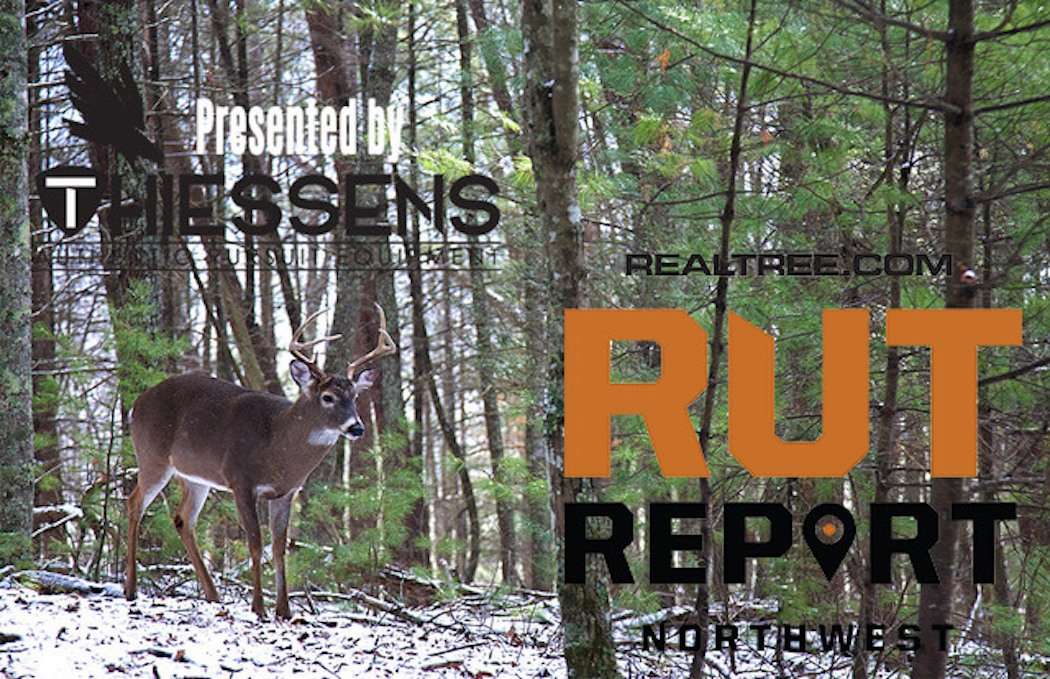Young bucks beginning to spar, but mature deer movement is still mostly after dark

Washington / Idaho
The past couple of weekends here in northern Idaho have seen heavy rains that hindered hunters in mountain areas. Now the weather has cleared and nights are growing cooler, though we still haven't received a hard freeze below 4,000-foot elevations.
Previous to the wet weather, I was capturing a surprising amount of daytime mature-buck movement that was a little out of character for this time of year. I was beginning to believe that mature bucks were moving a bit earlier this year than usual. But giving the matter more thought, and based on this week's trail-camera intel, I'm revising that notion. I'm beginning to think the typical annual patterns are actually a bit late. We usually get some decent mature-buck movement in early October, between archery and rifle season. But everything is late this year due to strange weather patterns, including freezing temperatures in June and a wet season that pushed well into July (when we usually have zero rain).
Deer movement was remarkably good a week and a half to two weeks ago but has now fallen off to nothing — not so unusual in the Interior Northwest of eastern Washington and northern Idaho, in particular. Despite our northern latitudes, the rut comes late in the Inland Northwest, typically kicking off around the second week of November and really starting to rock the last two weeks of November. Fawns here must drop after the final days of winter (which can string into May) and before the droughty days of summer (usually July). Rutting a little later allows fawns to drop during this Goldilocks period, when hard frosts have passed and things are still green.
Reports from friends in northeastern Washington mirror these observations. Friends hunting near the Canada border and at higher elevations say they are beginning to pick up a few more mature bucks on cameras, but invariably under the cover of darkness. Does and young bucks are moving well in Washington and Idaho, if you are only interested in venison for the freezer. Apple trees produced well this year and will remain the biggest draw in the coming weeks. I have yet to find a rub; I did observe bucks scraping weeks ago, though not aggressively. What older bucks I am seeing on camera — again, mostly at night and also mostly beneath apple trees — seem to be tolerating one another well. The youngest bucks seem to have started sparring, but I have seen no such activity from mature bucks.
None of this is too far out of the ordinary, and I predict things will get back on schedule as soon as we receive some freezing weather. The normal Nov. 13-15 rut kickoff, with a peak around Nov. 18-20, is likely to prevail again this year.
Montana
Montana has been experiencing cooler weather this fall, including several early snowfalls. Consequently, Big Sky Country is right on schedule, with bachelor groups beginning to break up and rubs and scrapes appearing. Most does appear to have unhitched their fawns, a sure sign of rut preparations. One friend said he witnessed a single forky buck chasing a doe, but he has also seen mature bucks feeding beside one another without aggression. Give it another week and try some subtle rattling, as it won't be long before bucks begin to establish pecking orders. Keep a very close eye on developments — things will break open very soon in Montana.
Wyoming
Friends in Wyoming — mostly hunting open prairie country where deer are easier to spy on — say movement was fairly decent last week, but things have slowed considerably this week. This is another indication of the lead-up to the rut, as bucks pause to catch their breath before the real festivities begin, lying low and saving their energy. The rut traditionally kicks off in a couple of weeks in much of Wyoming. Nov. 10-15 are the dates to mark on your calendar if you need to set vacation time aside or plan an escape. Temperatures have been cooler in much of Wyoming than in the Inland Northwest, with snow falling in some higher-elevation areas. So movement can prove variable based on localized weather patterns or altitude. If temperatures plummet or snow falls, additional movement is sure to occur. Right now, most reports tell of does and young bucks making appearances on fields, with little or no mature-buck movement, and only at the very edges of the day when witnessed.
Rub and scrape lines seem to be extending under the cover of darkness, so it's wise to keep a close eye on developments. Wyoming's whitetail rut, like much of the Northwest, is short and intense, and slacking off now could mean you risk missing the rut's opening days.
Want to know the word in other regions? Check out Realtree's Rut Report.
Longtime Realtree.com contributor and archery expert Patrick Meitin lives in Idaho and has bowhunted big game all over the world.







